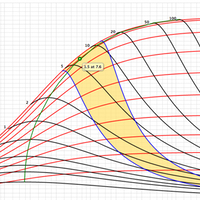Difference between revisions of "OptiFrac"
From wiki.pengtools.com
(→Used correlations) |
|||
| Line 37: | Line 37: | ||
* Select and copy results to Excel or other applications | * Select and copy results to Excel or other applications | ||
| − | == | + | == References == |
| − | + | Rueda JI, Mach J, Wolcott D (2004) Pushing fracturing limits to maximize producibility in turbidite formations in Russia. Paper SPE 91760. | |
| − | |||
| − | |||
| − | |||
| − | |||
| − | |||
| − | |||
| − | |||
| − | |||
| − | |||
| − | |||
| − | |||
| − | |||
| − | |||
| − | |||
| − | |||
| − | |||
| − | |||
| − | |||
| − | |||
| − | |||
| − | |||
| − | |||
| − | |||
| − | |||
| − | |||
| − | |||
| − | |||
| − | |||
| − | |||
| − | |||
| − | |||
| − | |||
| − | |||
| − | |||
| − | |||
| − | |||
| − | |||
| − | |||
| − | |||
| − | |||
| − | |||
| − | |||
| − | |||
| − | |||
| − | |||
| − | |||
| − | |||
| − | |||
| − | |||
| − | |||
| − | |||
| − | |||
| − | |||
| − | |||
| − | |||
| − | |||
| − | |||
| − | |||
| − | |||
| − | |||
| − | |||
| − | |||
| − | |||
| − | |||
| − | |||
| − | |||
| − | |||
| − | |||
| − | |||
[[Category:optiFrac]] | [[Category:optiFrac]] | ||
[[Category:pengtools]] | [[Category:pengtools]] | ||
Revision as of 15:44, 30 June 2017
Brief
optiFrac is a fracture design optimization tool.
For the given set of reservoir and propane properties it calculates maximum achievable well productivity index and required fracture geometry.
Typical applications
- Single Well Fracture Design and Sensitivity Studies
- Optimum fracture design parameters determination:
- Dimensionless productivity index, JD .
- Dimensionless Fracture conductivity, CfD .
- Fracture half length, Xf .
- Fracture width, w .
- Fracture penetration, Ix .
Main features
- Plot of JD as a function of CfD and Ix as parameter.
- Plot of JD as a function of CfD and Np as parameter.
- Design optimization curve which corresponds to the maximum JD values for different Np.
- Design Optimum Point at which the dimensionless productivity index, JD, is maximized for the given proppant, fracture and reservoir parameters.
- Physical constraints envelope.
- Proppant library with predefined proppant properties.
- Users Data Worksheet for benchmarking vs actual.
Interface features
- Save and share models with colleagues
- Last saved model on current computer and browser is automatically opened
- Metric and US oilfield units
- Save as image and print plots by means of chart context menu (button at the upper-right corner of chart)
- Download pdf report with input parameters, calculated values and plots
- Select and copy results to Excel or other applications
References
Rueda JI, Mach J, Wolcott D (2004) Pushing fracturing limits to maximize producibility in turbidite formations in Russia. Paper SPE 91760.

